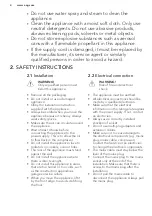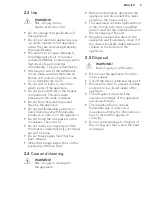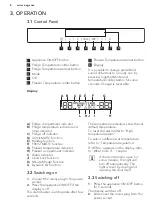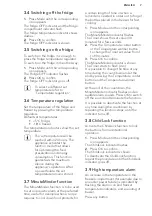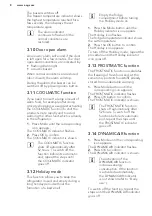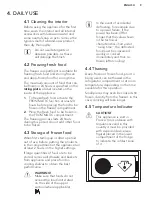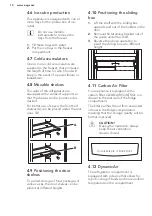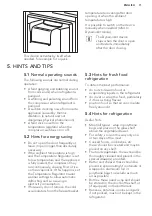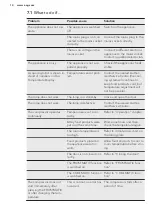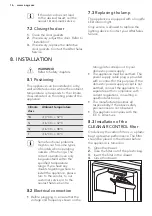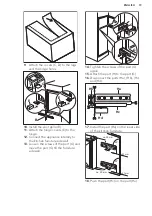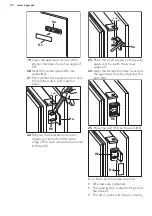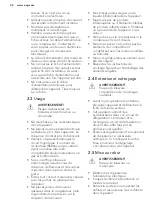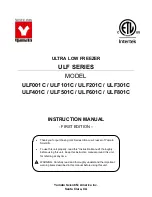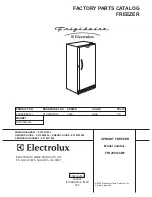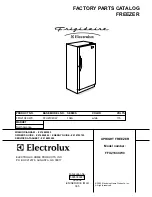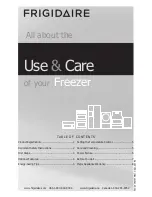
The equipment has to be cleaned
regularly:
1.
Clean the inside and accessories with
lukewarm water and some neutral
soap.
2.
Regularly check the door seals and
wipe clean to ensure they are clean
and free from debris.
3.
Rinse and dry thoroughly.
4.
If accessible, clean the condenser
and the compressor at the back of
the appliance with a brush.
This operation will improve the
performance of the appliance and
save electricity consumption.
6.3
Defrosting of the
refrigerator
Frost is automatically eliminated from the
evaporator of the refrigerator
compartment every time the motor
compressor stops, during normal use.
The defrost water drains out through a
trough into a special container at the
back of the appliance, over the motor
compressor, where it evaporates.
It is important to periodically clean the
defrost water drain hole in the middle of
the refrigerator compartment channel to
prevent the water overflowing and
dripping onto the food inside.
6.4
Defrosting the freezer
The freezer compartment is frost free.
This means that there is no build up of
frost when it is in operation, neither on
the internal walls nor on the foods.
The absence of frost is due to the
continuous circulation of cold air inside
the compartment, driven by an
automatically controlled fan.
6.5
Periods of non-operation
When the appliance is not in use for long
periods, take the following precautions:
1.
Disconnect the appliance from
electricity supply.
2.
Remove all food.
3.
Clean the appliance and all
accessories.
4.
Leave the door/doors open to
prevent unpleasant smells.
WARNING!
If the cabinet will be kept on,
ask somebody to check it
once in a while to prevent
the food inside from spoiling
in case of a power failure.
6.6
Replacing the carbon filter
The air filter is a consumable
accessory and as such is not
covered by the guarantee.
To get best performance the carbon air
filter should be changed once every year.
New active air filters can be purchased
from your local dealer.
Refer to “Installation of the carbon air
filter” for the instructions.
7.
TROUBLESHOOTING
WARNING!
Refer to Safety chapters.
ENGLISH
13




